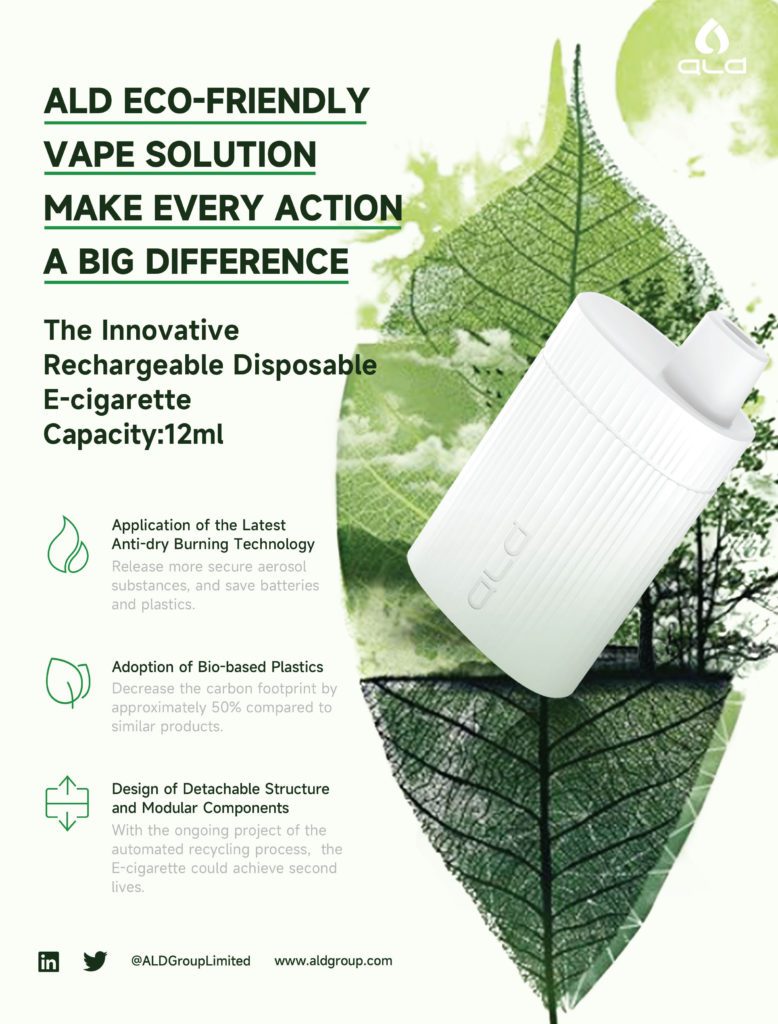
An FDA-funded study falsely claims that e-cigarette use negatively impacts health and increases utilization and cost.
By VV staff
Misinformation is incorrect or misleading information. It is different from disinformation, which is deliberately deceptive. Both are rampant in the vaping industry; however, it is difficult to distinguish between them.
Complicating the issue, it’s impossible to tell if researchers of disproven or flawed anti-vaping studies conducted defective studies intentionally or if they were just bad at their jobs. Many vapor industry advocates claim researchers are intentionally coming to conclusions that fit the U.S. Food and Drug Administration’s “supposed goal” of eventually banning all nicotine products, especially when the studies are being funded by the FDA.
In one recent study, researchers found that the use of electronic cigarettes costs the United States $15 billion annually in healthcare expenditures—more than $2,000 per person a year. The study, published on May 23 in Tobacco Control, is the first to look at the healthcare costs of e-cigarette use among adults aged 18 and older, according to researchers at the University of California San Francisco School of Nursing.
“Our finding indicates that healthcare expenditures for a person who uses e-cigarettes are $2,024 more per year than for a person who doesn’t use any tobacco products,” said lead author Yingning Wang of the University of California San Francisco Institute for Health and Aging.
According to the U.S. Centers for Disease Control and Prevention, combustible cigarette smoking-related illness in the United States costs more than $300 billion each year, including more than $225 billion for direct medical care for adults. With an estimated 30 million smokers, that is $10,000 a year more than for a person a who doesn’t use tobacco products.
The researchers based their estimates of healthcare costs and utilization on data from the 2015–2018 National Health Interview Survey. Healthcare utilization included nights in the hospital, emergency room visits, doctor visits and home visits. “Healthcare costs attributable to e-cigarette use are already greater than our estimates of healthcare costs attributable to cigar and smokeless tobacco use,” said Wang. “This is a concerning finding given that e-cigarettes are a relatively new product whose impact is likely to increase over time.”
The results of the study appear to be based on two key assumptions, according to Jamie Brown, professor of behavioral science and health and director of the Tobacco and Alcohol Research Group at University College London.
“First, that the identified associations between e-cigarette use and poor health status are caused by e-cigarettes. The majority of people who use e-cigarettes are also former or current cigarette smokers. Despite the attempts at adjustment, it is likely that at least some of the association is actually caused by cigarettes,” said Brown. “The second assumption appears to be that the alternative is simply that these people would not be using e-cigarettes. However, we know that e-cigarettes help people to quit smoking cigarettes and that cigarette smoking causes enormous healthcare expenditure. Therefore, the key question is: What is the net impact on healthcare utilization when trying to account for how e-cigarettes affect how many people smoke cigarettes? These types of models have tended to suggest net benefits are likely.”

Peter Hajek, director of the Tobacco Dependence Research Unit at Queen Mary University of London, called the study a “baffling” piece of work. “The authors report that people who use e-cigarettes have poorer health and incur higher health costs than nonsmokers, but it is not clear why they assume that the excess health expenditure incurred by smokers who are trying to limit their smoking by using e-cigarettes—often because of acute health problems—is caused by their recent vaping rather than by their lifetime smoking,” said Hajek. “This is like claiming that the extra health expenditure incurred by people with broken legs is caused by using crutches.”
Researchers for the study sought to put a price tag on the health costs of e-cigarette use, certainly a reasonable component in the policy trade-offs over the use of e-cigarettes, according to Chuck Dinerstein, director of medicine at the American Council on Science and Health (ACSH), who has over 25 years of experience as a vascular surgeon.
He stated that in order to get their data, researchers developed a model using the National Health Interview Survey (NHIS), a household survey of the general population in the U.S. that includes detailed questions on health and use of tobacco products. “The researchers point to a study using NHIS data that per smoker—meaning combustible—attributable healthcare expenditures are $5,602,” explained Dinerstein. “The finding of this study, for both those exclusively using e-cigarettes and the dual users, is roughly a third as much. E-cigarettes reduce healthcare utilization and costs.
“The researchers point out that exclusive e-cigarette users had ‘higher odds of reporting poor health status than never tobacco users.’ That would be no surprise; no one is claiming e-cigarettes do no harm; they are less harmful than the alternative. Just like the prescription of buprenorphine is less harmful than the free-market acquisition of fentanyl … E-cigarettes have been marketed for 15 years and have been the tobacco product of choice for young adults for eight years. I find the assumption that e-cigarettes alone have manifested increased health costs at this point debatable.”
Cameron English, director of bio-sciences at ACSH, believes that the study had several critical flaws, with the most serious being the assumption that e-cigarette use would negatively impact an individual’s health and that this negative impact would increase utilization and cost. “The authors assumed what they should have demonstrated,” stated English. “That’s especially troublesome because existing evidence suggests that vaping is far less harmful than smoking. Instead of boosting healthcare expenditures, e-cigarette use probably reduces the amount of money spent to treat sick smokers. In sum, the Tobacco Control paper is terrible.”
While the research itself is scientifically suspect, two other troubling details should also be highlighted, according to English. “First, FDA paid for this low-quality study—then publicly denied any involvement until the paper was published. Second, the agency’s actions appear to reflect a broader effort to shape the peer-reviewed vaping literature then use it to justify excessive e-cigarette regulations.”
It should also be noted that while the FDA’s primary concern is saving youth from the dangers of vaping, researchers in the FDA-funded study’s opening cite concerns about the increased use of e-cigarettes by youth, especially those aged 15 to 24. “The Truth Initiative, an anti-smoking group funded by money from the Tobacco Settlement, reports that those [aged] 15 to 17 are ‘16 times more likely to vape than people aged 25 to 34,’” explains English. “Among the limitations of the study, the researchers indicate that the young, those we should be most concerned about, were not included in the study. ‘We did not include youth in the analysis due to their low healthcare utilization,’ [the researchers said].”
EVALI caused chaos
Whether it’s misinformation or disinformation, it’s costing lives. It’s keeping combustible cigarette smokers from switching to less harmful products. Another recent study led by researchers at the American Cancer Society shows that perceptions of e-cigarettes as being “more harmful” than cigarettes by adults in the United States more than doubled between 2019 and 2020, and perceptions of e-cigarettes as “less harmful” declined between 2018 and 2020.

The study also found that an increase in cigarette smoking prevalence (2019–2020) was restricted to those who perceived e-cigarettes as “more harmful” than cigarettes while increases in prevalence of e-cigarette use were restricted to those who perceived e-cigarettes as “less harmful” than cigarettes, according to a press release.
Prevalence of dual use of both products increased only among those who perceived these products “as harmful.” The results coincide with the e-cigarette or vaping use-associated lung injury outbreak (EVALI) and the Covid-19 pandemic. The data was published in the American Journal of Preventive Medicine.
“While all tobacco products, including e-cigarettes, pose a risk to the health of the user, major health events, such as the EVALI epidemic in late 2019 and the Covid-19 pandemic in 2020, paved the way to new smoking/e-cigarette health risks,” the release states. “During this time, the quality and type of information individuals were exposed to may have shaped how they compare the potential harms of tobacco products, which, in turn, may have altered tobacco use behaviors.”
How individuals perceive the harm of e-cigarettes versus traditional cigarettes can predict their individual decision to use tobacco products, but according to the study authors, this is the first study to provide evidence that this relationship translates to population-based prevalence changes.
“While this study showed sharp changes in public perceptions of e-cigarette versus cigarette harms during EVALI and Covid-19, the more relevant finding for public health is that increases in cigarette smoking and e-cigarette use prevalence occurred primarily in individuals who perceived their preferred product as relatively less harmful,” said Priti Bandi, principal scientist of risk factors and screening surveillance research at the American Cancer Society and lead author of the study. “This suggests that public perceptions of e-cigarette versus cigarette harms influence population tobacco use patterns.”
In this study, researchers analyzed data from the National Cancer Institute-sponsored Health Information National Trends Survey collected from more than 10,000 U.S. adults from 2018 to 2020. The results showed that perceptions of e-cigarettes as “more harmful” than cigarettes doubled each year, increasing most between 2019 and 2020 (2018: 6.8 percent; 2019: 12.8 percent; 2020: 28.3 percent) while uncertainty (responses of “don’t know”) in relative harm declined (2018: 38.2 percent; 2019: 34.2 percent; 2020: 24.7 percent).
“Less harmful” relative perceptions declined (2018: 17.6 percent; 2019: 15.3 percent; 2020: 11.4 percent) while “as harmful” perceptions remained steady (2018: 37.4 percent; 2019: 37.7 percent; 2020: 35.6 percent). Exclusive cigarette smoking increased between 2019 and 2020 among those who perceived e-cigarettes as relatively “more harmful”(2018: 18.5 percent; 2019: 8.4 percent; 2020: 16.3 percent), exclusive e-cigarette use increased linearly among those who perceived them as relatively “less harmful” (2018: 7.9 percent; 2019: 15.3 percent; 2020: 26.7 percent), and dual use increased linearly in those who perceived them “as harmful”(2018: 0.1 percent; 2019: 1.4 percent; 2020: 2.9 percent).
“It is challenging for individuals to make conclusions about the short[-term] and long-term health effects of tobacco products without clear, effective and ongoing communication from public health authorities, especially when new contextual events that change health harms happen,” said Bandi in a statement. “There is a need for behavioral interventions to encourage individuals to be informed consumers of available scientific findings and appreciate that while no tobacco product is safe, there are inherent differences between relative and absolute harms between tobacco products that can influence behavior. In turn, public health education campaigns must facilitate informed decision-making by translating emerging scientific evidence accurately to appropriate audiences.”
Many people also mistakenly believe that the most dangerous thing about smoking is nicotine. Many falsely believe that nicotine causes cancer. “When people who smoke perceive nicotine-replacement therapy or nicotine vapor products to be as harmful or more harmful than smoking, they are less likely to use less harmful products when attempting to quit smoking,” says Kim Murray, a research fellow with the Taxpayers Protection Alliance.
Murray believes that the widespread misperception about nicotine is due to misinformation. The misinformation is rampant in media and government messaging. This can have damaging impacts on public health.

“Unfortunately, the number of people believing the misinformation about nicotine vapor products is rising,” she wrote in an opinion piece. “One of the biggest sources of misinformation is fake news shared on social media. There is a real need for informative and accurate information about smoking and nicotine, but most people don’t know where to find the information,” states Murray. “A logical resource should be their healthcare provider. However, most of the time, that would be the wrong choice because 60 percent of nurses incorrectly perceive nicotine as carcinogenic, and 72 percent believe that nicotine patches could cause heart attacks.”
In April, researchers concluded that more than 60 percent of all doctors incorrectly believe all tobacco products are equally harmful, making them less likely to recommend e-cigarettes for people trying to quit smoking, according to a study published in JAMA Network Open.
The authors of the study, led by Rutgers University, asked more than 2,000 doctors in the U.S. in 2018 and 2019 how they would advise patients on using e-cigarettes as a method of combustible smoking cessation. One in four physicians discouraged all use of e-cigarettes and were more likely to advise against e-cigarettes if the hypothetical smoker they were counseling were a younger, light smoker compared to an older, heavy smoker.
Although no associations were found between harm reduction beliefs and being asked about e-cigarettes by patients, the association between physicians’ harm reduction beliefs and their e-cigarette recommendation practices was significant.
“It will take a lot to change minds and dispel the now entrenched, and largely mistaken, mistrust of nicotine. As in many areas of public life, urban myths and half-truths, which are ingrained over time, are often easier to believe than the truth for many in society. It is difficult to persuade people that the beliefs that they hold are wrong,” states Murray. “Consumers deserve accurate information to enable them to make informed choices. The country won’t achieve health equity and social justice if we continue to misinform those who choose to use nicotine in a safe manner.”
This article first appeared in Vapor Voice 3, 2022.


